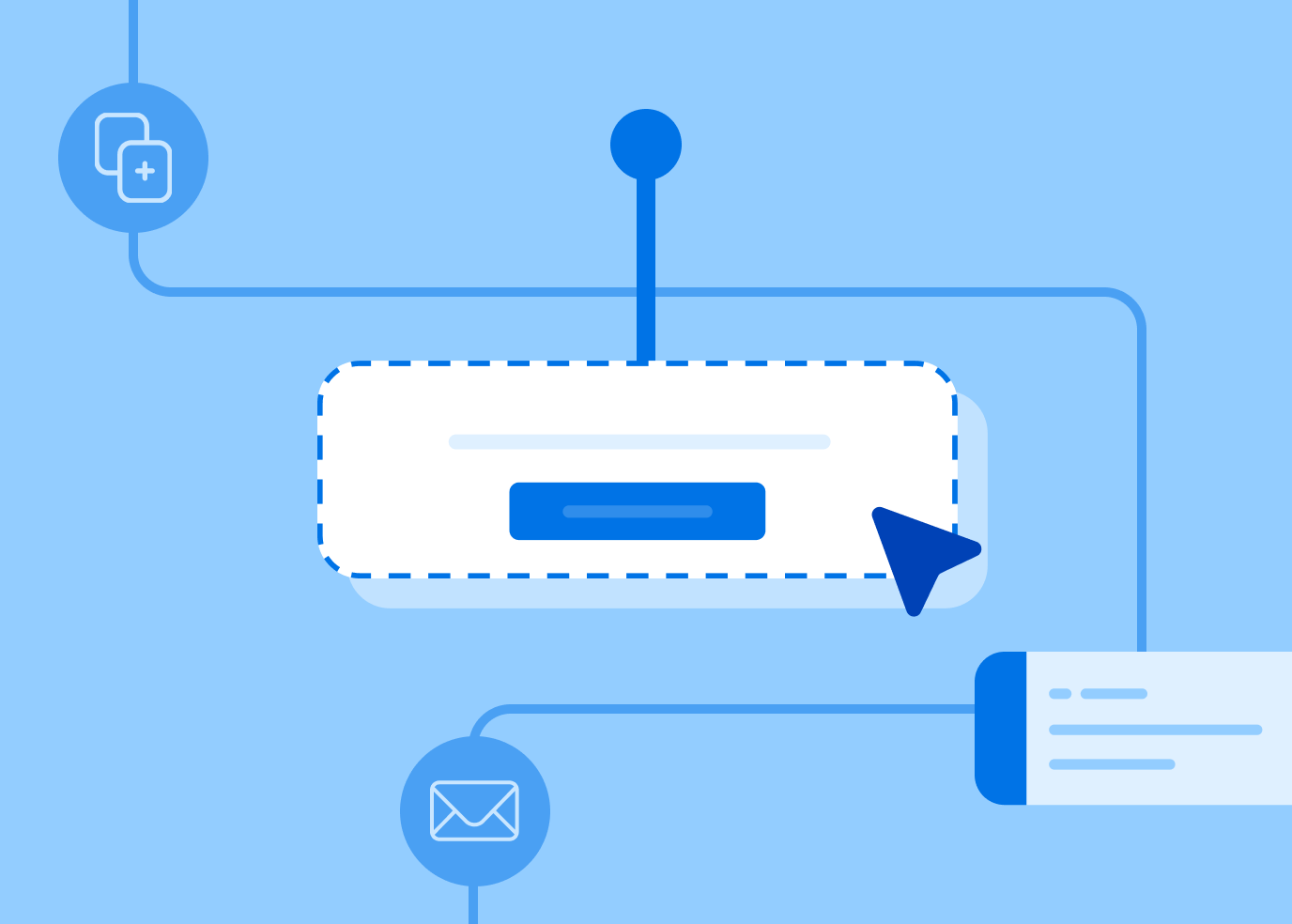The work tasks and processes you carry out every day are often nuanced, complex, and far from linear. Whether you need to collect donations, run education programs, or handle event registration, there are likely different actions you need to take with each donor, registrant, or event attendee based on their exact situation.
When this is the case, you have a choice. You can handle each situation on a case-by-case basis, which could take up to hours of extra time, or you could create a workflow to automate the process of deciding how to handle every person who fills out your web forms, whether they’re contact forms, demo request forms, or something else.
With Workflow, you can conditionally trigger integrations with Salesforce, Google Sheets, Stripe, Mailchimp, and many other systems to carry out specific actions based on what your users enter into your web forms.
In this tutorial, we’ll walk you through a basic example of how to set up conditional paths that trigger either a payment connector or a Mailchimp connector based on the information a person submits.
What are conditional paths?
If you’ve used FormAssembly for a while, you’re probably already familiar with conditional fields—fields in a form that appear only when a user makes a certain selection. For example, if a user selects that they would like to be contacted by phone, a field could be configured to conditionally appear to collect a phone number.
In the same way, the conditional routing feature available in Workflow lets you make entire paths of your workflow conditional based on how your users fill out forms. In a contact form, for example, you can trigger different versions of an email based on whether a user indicates that they want to talk to sales, marketing, or customer service. Or, on a donation form, you could direct donors down different paths based on their donation level.
However you use them, conditional paths allow you to easily (read: no complicated formulas) customize your processes to work just the way you want them without all the hard work.
Setting up conditional connectors
Powered by the magic of conditional paths, you can also set up connectors to trigger conditionally. We’ll walk through how you could set this up in a real business environment.
We’ll take an example scenario where you are pre-launching a new product and would like to take pre-orders using your new workflow. Customers are given the choice to place a pre-order immediately or subscribe to your mailing list where they’ll be alerted when the new product is released. The first situation would trigger a path containing a Stripe connector, and the second would trigger a path containing a Mailchimp connector.
To get started, add a “Pre-order or Alert” Conditional Step on your Pre-Order Form.
Rename the first path to “Pre-Order Total Cost” and the second path to “Alert.”
You’ll want to set your “Pre-Order Total Cost” path to trigger based on if:
- Total Cost (Select Source Field) is Greater Than (Operator) 0
If that’s not the case and the pre-order is any amount greater than zero, the respondent will be taken down the “Alert” conditional path.
Now, underneath the “Pre-Order Total Cost” path, you’ll add a Stripe connector by clicking the “Add Step” option on your Workflow Map and then picking the appropriate option.
After selecting “Connector,” you’ll be able to set up a Stripe Connector that would allow customers to pay for their pre-order. The information you’ll enter includes:
- Connector Name
- Connector Description
- Form Response Action (Which form will trigger the connector?)
- Connector
After filling out this information, you’ll configure your connector in a new popup window. You’ll repeat this process to add and configure an HTTPS Connector for the Mailchimp integration.
Pro Tip: If you don’t see the connector window appear, this may be because you don’t have pop-ups available on your browser and will need to adjust this setting first.
Focusing back on our use case, the “Pre-Order Total Cost” path you’ve set up will now conditionally trigger the Stripe Connector where the customer’s payment would be processed. If the customer wasn’t ready to make a pre-order, the condition of total value is greater than zero would not be met, and the customer would be taken to your “Alert” conditional path. This path would trigger an HTTPS Mailchimp connector, which would subscribe the customer to your new product alert mailing list.
You can complete this workflow by adding additional steps to redirect to a Thank you page and send a Notification Email.
Connectors in workflows: tips and troubleshooting
Using connectors in workflows is similar but not entirely the same as using connectors in your forms. Here are some of the key things to know:
- Workflow connectors are distinct from your forms even though they can interact with the information submitted through them. This means that any connectors you set up on a workflow will not run in individual forms not set up as part of a workflow. Likewise, any connectors you set up on an individual form won’t run if the forms are filled out as part of a workflow.
- If you switch out forms in your workflow or make changes to the connector types, you’ll need to recreate your connectors and configurations.
- Connectors need to be placed in the right position in a workflow to work correctly. Here’s a list of Rules for Adding Connectors to Workflows.
Takeaways and next steps
That completes our conditional connectors tutorial! We hope you learned a use case that you can apply on your own forms. For more information on connectors, you can check out our Workflow Step – Add a Connector document.
If you’d like to learn more about Workflow features, you can visit our FormAssembly Workflow Builder documentation.



